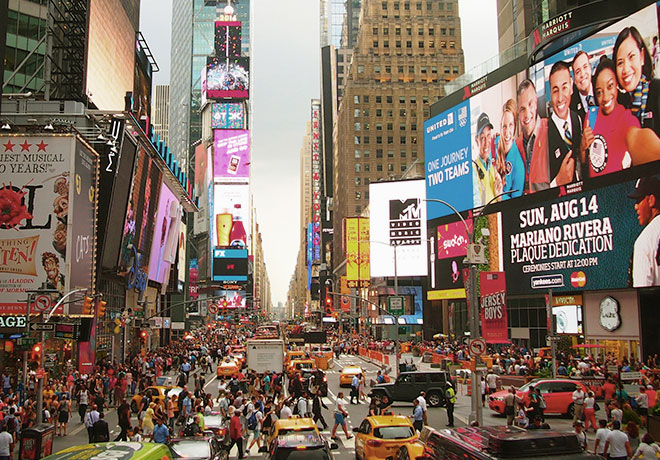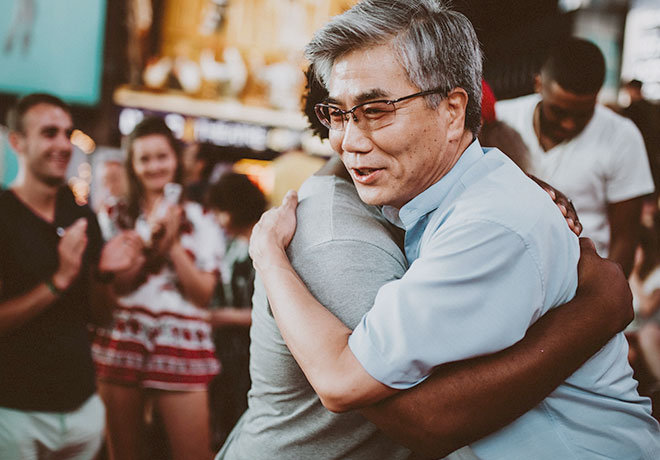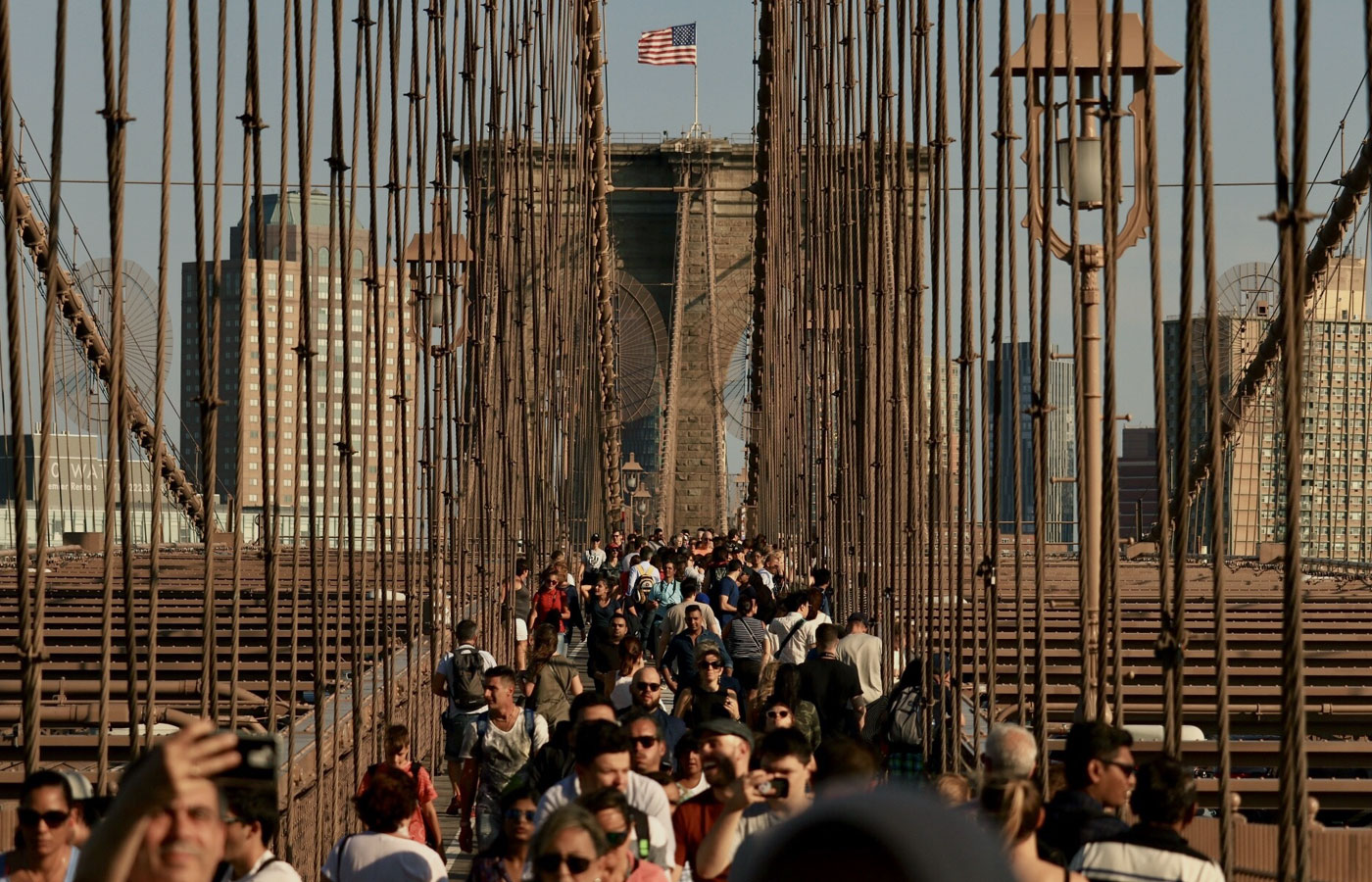On an American university campus, a tattered library card rests inside a book. Its familiar American names would be utterly inconsequential until an entry from 1997 reveals the name C. Gurung. The last name Gurung indicates an ethnic group from Mustang, Nepal. This region is remote and unreached, an inhospitable high-altitude desert located on the border of Nepal and China. Somehow, an individual from an isolated Tibetan Buddhist village made their way to the US in the late 1990s to receive their education. Amid forgotten book covers, evidence of a spectacular treasure is found. The unreached are among us, not actually unreachable at all.
Global gateway cities: definition
In American urban centers today the presence of unreached people groups is a growing phenomenon. The term ‘global gateway cities’ has been minted to emphasize the importance of missions to these diaspora communities with global connections. Global Gates, a mission agency in New York City, defines ‘global gateway cities’ as those cities with sizable populations of least-reached, ‘ends of the earth’ people groups who are both accessible to Christian witness and through whom their home populations overseas could be impacted with the gospel.[1]
The transnational nature of global gateway cities is reshaping former assumptions about unreached people groups’ accessibility in exciting new ways.
Transnationalism is another useful contemporary term that breaks away from the traditional definitions of immigrants being unidirectional and permanent and considers that immigrants today are firmly rooted in their new country but maintain multiple linkages to their homeland.[2] The transnational nature of global gateway cities is reshaping former assumptions about unreached people groups’ accessibility in exciting new ways.
New York City is known as having the most diverse zip codes on earth with over 637 documented unique languages and dialects.[3] If you worked in a hospital in Queens, you would find yourself among the likes of Tenzin, a man born in Tibet, raised in India, educated in America, and spending his free time raising money to support Tibetans in various settlements throughout Nepal and India. He is Tibetan Buddhist, and he is deeply connected to his diaspora community. He is a quintessential example of a global gateway city resident representative of an unreached people group. He is as reachable as a patient or a co-worker, and through him, opportunity for an entire community isolated by hardship and geographical barriers is suddenly accessible.

Global gateway cities: formation
Three main factors are at play in laying a foundation for people like Tenzin and the emergence of global gateway cities: immigration policies, educational and financial opportunities, and technology. In 2017, 50 million immigrants were living in the United States—19 percent of the world’s migrant population.[4] Other countries with hospitable immigration policies are likely to see the global gateway city phenomenon as well. Though immigration policies change with political cycles and climates, there has been an overall increase in immigration in the past ten years. In 2017, the number of migrants had reached 258 million worldwide, up from 173 million from the year 2000. This represents 3.4 percent of the global population.[5] With this kind of movement, the diversity of immigrants also increases, bringing those groups once considered completely isolated, into sudden contact with the outside world, of their own volition.
50 million immigrants the in U.S. in 2017
19% of the world’s migrant population
258 million worldwide up from
173 million from the year 2000
The ease with which people can enter a country to work is a significant antecedent to the development and presence of global gateway cities. Push-and-pull economic and educational opportunities are additional causal factors. While the biggest migrations are regional in nature due to the high cost of relocating to other areas, it is not uncommon for even far flung people groups to make their way to urban centers in search of a better income. Additionally, international students are the fastest-growing group of migrants in the world with the US, the UK, and Australia being the leading countries in specializing in the production of education.[6] This shows that while people may love and long for their home, they are driven by the economic and educational advancement opportunities that exist in other places. This shifting of people away from their home does not imply a complete departure from their culture or their people, but rather they are seeking opportunity on behalf of the very people they left.
Finally, like glue holding everything together, advances in technology, particularly regarding social media connectivity, are the gateways back home into the most unreached parts of the world. Social media platforms, such as Facebook and WeChat, have created sustained interactions between migrants and their home countries. These digital communities form interlocking networks of social relationships that share ideas, information, and resources despite physical absence.[7] Because of these frequent connections to an immigrants’ home, through voice, video, text, and other internet instant messaging apps, cultural identity is often kept intact, or even heightened, in an attempt to remain relevant to their networks back home.

Global gateway cities: opportunity
With the acceleration of urbanization, globalization, and this miraculous movement of peoples, mission organizations have been theorizing on how to use this obvious opportunity to fulfill the Great Commission among the diaspora communities in global gateway cities around the world. Enoch Wan proposes that the reality of demographic trends in the 21st century requires a three-tiered strategy: to the diaspora (evangelism and service), through the diaspora (using diaspora Christians to reach their own), and by and beyond the diaspora (challenging diaspora Christians to engage in cross-cultural missions).[8] The ultimate goal of diaspora ministry in global gateway cities is to not only reach the diaspora communities that have connections back to their homeland but also to mobilize and train them for diaspora missions to their own people and beyond through cross-cultural outreach.[9]
The church has already begun to utilize these diaspora connections found within global gateway cities to fulfill the Great Commission.
The church has already begun to utilize these diaspora connections found within global gateway cities to fulfill the Great Commission. For instance, in 2014 the Evangelical Missiological Society made diaspora peoples the focus of their regional and national conferences. Conferences such as these have led to the formation of networks, partnerships, and publications to help educate the church on diaspora peoples and the strategic nature of global gateways cities for Great Commission advancement.
Although the church is awakening to the fact that global gateway cities are strategic for the advancement of the Great Commission, work among unreached people groups in urban contexts is not without pitfalls. Current shortcomings in missional outreach in global gateway cities include the following: short-term and impersonal evangelism styles, a lack of interdenominational cooperation, a lack of training and partnership with local urban churches in cross-cultural outreach, and not fully utilizing the diaspora churches that currently exist in the city. These shortcomings coupled with the astronomical expense of living in the city make urban ministry difficult. The reality is many unreached people groups living in the city, such as Hindus and Buddhists, need time and relationship to come to grips with the biblical concept of God, creation, and sin before they can completely understand the gospel.[10]
Missional outreach in global gateway cities that understands and avoids these negative implications would include a strategy that places emphasis on a long-term presence. This would include mobilizing local churches for cross-cultural ministry by partnering with diaspora churches within the city and providing financial resources which gives sustainability to those seeking to maintain a long-term presence. Global missional churches need to empower inner-city diaspora churches with the resources they need financially so they are fully equipped to make a long-term impact for both their mission projects, local and overseas, as well as their family’s needs.

On behalf of this man, and the unreached people groups, one of which he represents, may I urge you not to sit idly by in a time when the harvest has come to us.
Global gateway cities: concluding reflection
On a bustling street corner in a central Queens neighborhood stands a building adorned with Tibetan Buddhist prayer flags, an active Tibetan Buddhist temple. The founder is an immigrant from the Himalayan villages of Nepal, who works as a taxi driver. He has American-born grandchildren, and they are just as comfortable catching a subway in New York as they are a motorcycle taxi in Kathmandu. They are residents of this new world, global gateway citizens who have access in one world and influence in another. Imagine if Christ living in one of us were to meet him here, in his taxi, on a routine drive in the midst our busy schedules. Can one not breathlessly wonder how the Holy Spirit might take hold of not just one heart, but also an entire people group? On behalf of this man, and the unreached people groups, one of which he represents, may I urge you not to sit idly by in a time when the harvest has come to us.[11]
Endnotes
- ‘Defining Global Gateway Cities’, Global Gates, https://globalgates.info/what-are-global-gateway-cities/ [Accessed 3 December 2019]
- Nina Glick, Schiller, Linda Basch and Cristina Szanton Blanc, ‘From Immigrant to Transmigrant: Theorizing Transnational Migration’, Anthropological Quarterly Vol. 68, No 1 (January 1995): 48-63.
- NYC Cultural Affairs Dept. ‘Maps’, Endangered Language Alliance, https://elalliance.org/programs/maps/?sfns=mo [Accessed 20 December 2019]
- United Nations, ‘International Migration Report’, United Nations, https://www.un.org/en/development/desa/population/migration/publications/migrationreport/docs/MigrationReport2017_Highlights.pdf [Accessed 5 December 2019]
- Philippa Stroud, Rhiannon Jones and Stephen Brein, ‘Global People Movements’, Legatum Institute. https://lif.blob.core.windows.net/lif/docs/default-source/default-library/legj6267_global-people-movements-180622.pdf?sfvrsn=0 London, 2018.
- Massimilano Tani, ‘Migration and Education’, UNSECO Global Education Monitoring Report, https://en.unesco.org/gem-report/report/2019/migration [Accessed 13 December 2019]
- Jennifer M Brinkerhoff, Digital Diasporas: Identity and Transnational Engagement (Cambridge: Cambridge University Press, 2009)
- Enoch Wan, Diaspora Missiology: Theory, Methodology, and Practice (Portland: Institute of Diaspora Studies, 2011), 185-88.
- Enoch Wan and Anthony Casey, Church Planting Among Immigrants in US Urban Centers: The ‘Where’, ‘Why’, and ‘How’ of Diaspora Missiology in Action (Portland: Institute of Diaspora Studies, 2014), 104.
- M. Tsering, Jesus in a New Age, Dalai Lama World: Defending and Sharing Christ with Buddhists (Upper Darby: Interserve, 2006), 223.
- Editor’s Note: see article by Paul Hildreth, entitled ‘Commitment to the City’ in March 2014 issue of Lausanne Global Analysis, https://lausanne.org/content/lga/2014-03/commitment-to-the-city-responding-to-the-cape-town-commitment-on-cities
Photo credit
Hug photo by Miguel Bautista on Unsplash
